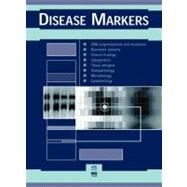Disease Related Glycosylation Changes and Biomarker Discovery: Challenges and Possibilities in an Emerging Field
, by Rudd, Pauline M.- ISBN: 9781586039721 | 1586039725
- Cover: Paperback
- Copyright: 2/1/2009
Many systems and organizational features of cells are disturbed in disease. These include the pathways that regulate the expression of some 300 proteins involved more or less directly in glycan processing. All cell surface and secreted glycoproteins must travel through the endoplasmic reticulum and the Golgi compartments of the secretory pathway where the enzymatic addition of sugars to proteins and their further processing takes place. Proteins which contain appropriate glycosylation sequons in their primary sequence have the potential to acquire N-(AsnXaaSer/Thr) or O-(Ser/Thr) linked oligosaccharides. The processing of the glycans, carried out by enzymes acting sequentially, generally gives rise to a mixture of glycosylated variants of a glycoprotein, known as glycoforms. The compositions of the glycoforms primarily reflect the levels of the enzymes, the monosaccharides and the monosaccharide nucleotide donors that are within the cell in which the protein is expressed. Glycan signatures and glycosylated variants of proteins that are associated with disease may prove to be valuable enough to inform clinical decisions. However, to reach this goal, they not only need to distinguish patients with disease from healthy controls, but furthermore, distinguish patients with cancer from those with benign disease. In this regard, one needs to establish whether global changes in the glycome are disease specific or whether they reflect bystander effects. One such example is inflammation, which is an integral part of many cancers and which in this publication is exemplified by the nature of biomarkers identified thus far. These data add to a growing debate as to the role of the inflammatory response in the aetiology of this disease.






